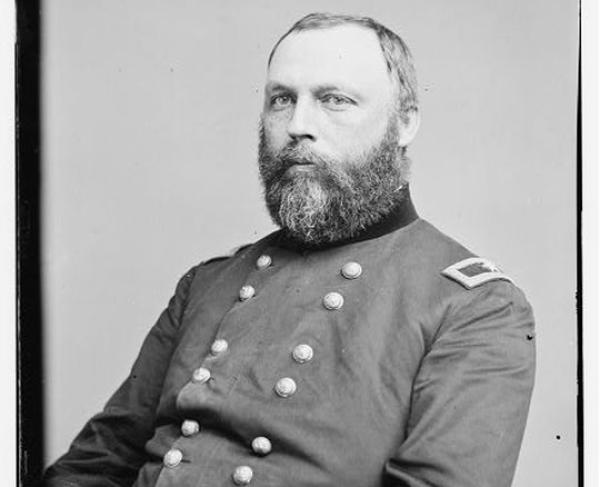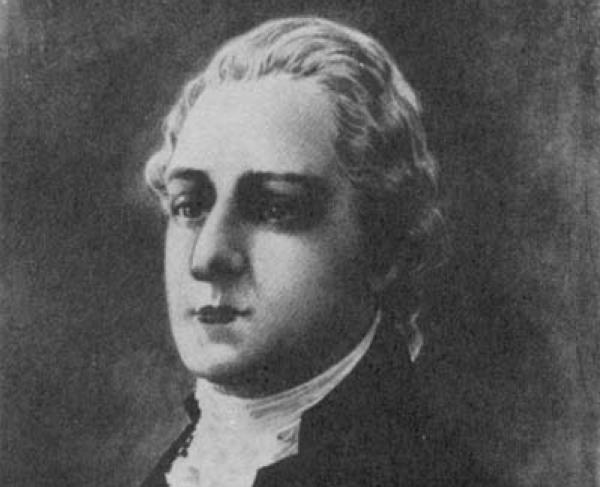Dr. William A. Hammond

Dr. William Alexander Hammond was born in Annapolis, Maryland, on August 28, 1828. His family moved to Harrisburg, Pennsylvania, when he was six years old and then to New York City, where he attended University Medical College, which is now known today as the New York University School of Medicine. He graduated in 1849 at the age of 21. After graduation, Hammond enlisted as an assistant surgeon in the U.S. Army. During his free time, he conducted research on how different poisons affected the nervous system and amassed a large collection of botanical specimens. These side interests allowed him to resign from the army in 1860 and become chair of anatomy and physiology at the University of Maryland School of Medicine in Baltimore.
He returned to the army when the Civil War began. He was transferred to Western Virginia (today West Virginia) where he worked with Dr. Jonathan Letterman and General William Starke Rosecrans to establish an ambulance corps. Meanwhile, General Clement Finley, the 10th Surgeon General, resigned from his position. With a vacancy in the position of Surgeon General, President Abraham Lincoln nominated him for the position on April 25, 1861 and was promoted to the rank of brigadier general.
As Surgeon General, Hammond worked toward making the Union hospital system more efficient. He set minimum requirements of age and skill for physicians in the Army Medical Corps and sent inspectors to examine hospitals for cleanliness and ventilation. While directing the health of the army, Hammond also wrote A Treatise on Hygiene: With Special Reference to the Military Service in 1863 and collected reports to publish in the Medical and Surgical History of the War of the Rebellion which ran between 1861 and 1865. In addition, he created a pilot program for Letterman’s new Ambulance Corps, with which he and Rosecrans had assisted with in Western Virginia.
Although beneficial to Union soldiers, his methods caused friction between him, other doctors, and the Secretary of War Edwin M. Stanton. On May 4, 1863, Hammond banned the use of the mercury compound calomel. This “miracle drug” was used to treat diseases ranging from syphilis and bronchitis to influenza and cancer and acted as a laxative for the body. It was prescribed readily and in large doses by most physicians of the day. Hammond believed that it caused unnecessary stress to the body. Medical professionals had little alternatives for this treatment and did not agree with Hammond’s opinion. In addition, Hammond’s critical personality and desire to change protocols put him in direct conflict with Stanton. Because of this feud, he was sent on a tour of Southern hospitals on September 3, 1863, which ushered in an interim Surgeon General. He was subsequently court-martialed. The Court Martial dismissed him from the service on August 18, 1864.
After the war, Hammond moved to New York City to open a private practice. In 1867, he worked with Bellevue Hospital to help research and study nervous and mental diseases and eventually taught at New York University on the subject. He was the first American physician to research and specialize in central nervous system and mental diseases and disorders. By 1871, Hammond published his most famous work Treatise on Disease of the Nervous System. Unhappy with his dismissal from the army, he petitioned the U.S. government to reconsider his court-martial and was retroactively cleared of his charges and reinstated as a brigadier general. He did not receive pay or allowances from this reinstated title.
By the time Hammond died on January 5, 1900, he had helped found the American Neurological Association, helped establish the Army Medical Museum (that is now known as the National Museum of Health and Medicine), and helped to create a Sanitarium for Diseases of the Nervous System in Washington, D.C.. As Surgeon General, Hammond established new policies and organization techniques. He authorized Letterman to establish an ambulance corps that removed wounded soldiers from the battlefield quickly and efficiently. Hammond required the highest level of skill from physicians in the medical corps. Through his efforts, Hammond helped save thousands of lives during the Civil War and set standards of military medical care for decades to come.


